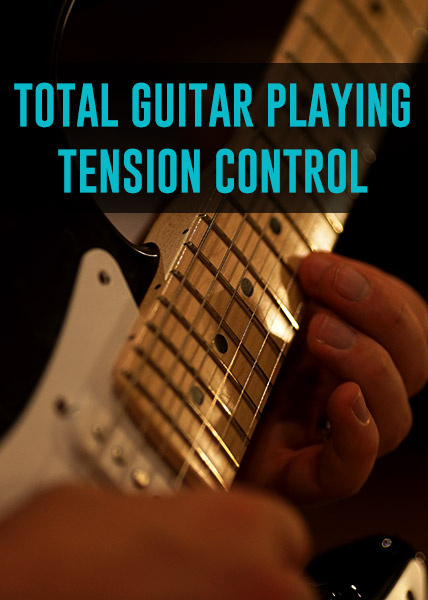5 Fast-Acting Tips For Playing Metal Rhythm Guitar Riffs Like A Pro
Technique Much Faster

EMAIL TO GET ACCESS
By submitting your info, you agree to send it to Tom Hess Music Corporation who will process and use it according to their privacy policy.
Want to quickly level-up your rhythm guitar playing and improve your guitar technique?
You’re in the right place.
Because this metal rhythm guitar article will give you a lot of ideas for playing better guitar riffs.
And guess what?
Improving your rhythm guitar chops will make you an in-demand guitar player for just about any band.
That’s because most guitar players focus all their efforts on playing ‘lead’. Those who can play rhythm guitar like a pro are rare.
Technique Much Faster

EMAIL TO GET ACCESS
By submitting your info, you agree to send it to Tom Hess Music Corporation who will process and use it according to their privacy policy.
To help you become one of those rare guitar players, I’ll first teach you 4 awesome metal rhythm guitar riffs (that are easy to play, but sound great).
Then, I’ll give you 5 critically important rhythm guitar tips that will improve your guitar technique and help you play rhythm guitar like a pro (even if you are not an advanced player yet).
Ready to have fun?
Then here are the 4 killer rhythm guitar riffs I promised:
Now that you have some awesome rhythm guitar riffs to practice...
Here are 5 powerful rhythm guitar technique tips that will help you play these (and any other metal rhythm guitar riffs you know) like a pro:
Rhythm Guitar Technique Tip #1: Tighten Up Your Palm Muting
One of the key differences between someone who can play rhythm guitar like a pro and a rank amateur...
... is control over palm muting when playing metal rhythm guitar riffs.
And even though most guitarists think palm muting is too basic of a technique be worth working on...
Mastering rhythm guitar palm muting takes some real practice.
Specifically, there are 2 nuances of your rhythm guitar technique to get control over:
1. Which notes are supposed to be muted (vs. which ones ought to ring open) as you play your metal rhythm guitar riffs, and...
2. Exactly how much muting you want to use as you play rhythm guitar.
Then, all you have to do is use the proper amount of muting on the correct notes in your rhythm guitar riffs – no more and no less.
Without this clarity, it’s impossible to use the right amount of muting. And this is what causes less experienced rhythm guitarists to randomly make their muting softer (or more aggressive) or mute the notes that shouldn’t be muted.
Bottom line:
Develop good control over your palm muting, and you’ll have better rhythm guitar chops than 90% of guitarists.
Watch this video to see how to master this area of your rhythm guitar technique and learn to play rhythm guitar like a pro:
Question: “But Tom Hess, why wouldn’t it be a good idea to vary the intensity of my palm muting when I play rhythm guitar? Isn’t this ability to vary the muting attack in guitar riffs – the mark of ability to play rhythm guitar like a pro?”
Answer: Yes and no. It IS a good idea to vary the palm muting intensity... but it has to be done intentionally, and not at random.
To play rhythm guitar like a pro, decide (before you start practicing any guitar riff) where and when you’ll vary the intensity of palm muting. Then, as you practice your guitar riff, vary the intensity of the muting in those places ‘every time’. This is much more challenging than simply applying palm muting randomly... but that is what makes your playing sound truly pro.
Rhythm Guitar Technique Tip #2: Strum Your Power Chords In Tune
This may sound shocking, but...
Even strumming the simplest of power chords (in your metal guitar riffs) can be much harder than most people realize.
A common example:
I recently reviewed a recording of a (new) rhythm guitar student of mine who sent in a video of him playing some metal rhythm guitar riffs.
 Play Tighter Rhythm Guitar Riffs
Play Tighter Rhythm Guitar RiffsLearn how to make your rhythm guitar playing sound more tight.
 Become A Killer Rhythm Guitarist
Become A Killer Rhythm GuitaristStart playing killer heavy metal rhythm guitar using these 5 tips.
 How To Record Guitar In The Studio
How To Record Guitar In The StudioLearn how to record super tight rhythm guitar tracks in the studio.
And – even though his guitar was perfectly in tune - his strumming sounded out of tune.
Why?
Because when he played open power chords (like the open low E power chord), his pick would bend the low E string (making the note sharp – like a lead guitar string bend).
As a result?
The low E string would become out of tune with the rest of the chord.
Strumming rhythm guitar chords this way was making my student (and everyone else who plays guitar riffs like this) sound amateur.
Fortunately, the solution is simple... and it has nothing to do with picking (or strumming) the notes lighter.
The secret is in changing the direction your guitar pick takes during the strum.
The wrong way to strum is to move your pick in a “J” path through the chord (where the hand first strums down and then moves away from the strings). This is what pulls the low E string out of tune.
The better rhythm guitar technique is to simply move the pick (and your hand) straight down, so it cuts through the strings like a knife, in a single downward motion.
This ensures that the low E string doesn't go out of tune and keeps the chord sounding stable.
Bonus tip: do the strumming motion quickly. If you combine the direction of the strum (straight down – as described above) with doing the motion quickly – your guitar riffs become tight and precise... making you play rhythm guitar like a pro.
Question: “But Tom Hess, what if I'm playing at a slow tempo? How is strumming chords ‘fast’ possible when I'm playing slowly?”
Answer: The speed at which you strum has nothing to do with the tempo of the music. Your guitar technique motions can (and should) always be quick and precise. Then, you simply let the notes (or the chords) ring out for as long as the music requires.
In fact, what I just told you is a big tip for improving your lead guitar technique (and building guitar speed) as well as your rhythm guitar playing.
Here is an example of this practice philosophy applied to practicing legato guitar technique:
Rhythm Guitar Technique Tip #3: Don’t Tune Your Guitar Like Normal (When Recording Rhythm Guitar Riffs).
This metal rhythm guitar playing advice is related to the last tip (about keeping the power chords stable).
You see, even if you refine your strumming guitar technique, your rhythm guitar riffs can still sound out of tune, especially when you mix your guitar parts with other instruments (such as keyboards).
How does that happen?
Simple:
When you play metal rhythm guitar riffs, you typically hit the strings quite hard. (Much harder compared to the guitar technique you’d use when playing scales, arpeggios or other guitar licks.)
That means...
If you tune your guitar to standard A440 tuning, the notes will become sharp by a few cents when you strum the strings.
This can create a nightmare when recording rhythm guitar parts in the studio. And is something you ought to be aware of if you want to play rhythm guitar like a pro and make money in music by doing studio session work (which can pay quite well if you’re good at it).
How do you solve this?
Before you sit down to record rhythm guitar parts, you literally tune your guitar down by a few cents and strum (using the most aggressive guitar technique you plan on using) while sitting in front of a tuner.
Your goal is to have your guitar riffs be perfectly in tune (on the tuner) when you play.
And that (slightly flat) becomes the tuning you record your rhythm guitar riffs in.
To be clear, this is NOT blanket advice for how to always tune your guitar. (You can tune your guitar perfectly in time to A440 for playing most other things.)
That said, this is an advanced and proven metal rhythm guitar riff recording trick (that few guitarists know). It can save you a lot of headaches (and money) and help you play rhythm guitar like a pro.
Rhythm Guitar Technique Tip #4: Improve Your Rhythm Guitar Timing
Practicing your rhythm guitar timing is like flossing your teeth. Everyone knows they need to do it, but most guitar players don’t do it enough.
And this is one reason one big reason why most guitarists can’t play rhythm very well.
How do you become better at playing rhythm guitar riffs in time?
The first thing to know is: playing rhythm guitar riffs in time has almost nothing to do with your ‘guitar technique’.
It’s entirely a mental challenge.
Here are the steps to practice for improving your rhythm guitar timing:
Step 1: First, be clear on the rhythm your hands are supposed to play. This means: put your guitar down and make sure you can count the note values of the guitar riff in time with the metronome click. (Yes, actually count the rhythmic note values verbally, using your voice.) This will teach you where the notes are supposed to fall and make it easier to play rhythm guitar in time.
If you don’t understand how to do this – take guitar lessons from a guitar teacher who can show you how.
Question: “But Tom Hess, what if the rhythm guitar riff is too fast for me to count verbally?”
Answer: Then simply count the rhythm at a slow tempo. If you can do that, then playing the guitar riff at a faster tempo will become much easier.
Step 2: Clap the rhythm in time with the beat.
This helps you to get even more clarity and control over your metal rhythm guitar riffs. And it’s far easier to clap the rhythm (in time) with your hands than to play it on guitar.
That’s why this step comes before actually playing the riff on your instrument.
Step 3: Pick up your guitar and practice playing your guitar riff, using only one note or chord.
Yes, even if the riff uses complex chord changes, string skipping parts or single note runs – only fret one note (or chord) and pick/strum through the rhythm of the riff with your picking hand.
Stay on this step until you can play the riff in time.
This bridges the gap between understanding the rhythm on a mental level and physically playing it on guitar.
Step 4: Play the entire riff on guitar. If you’ve done the previous steps – this final level will feel much easier than it would be if you were to jump in at this step the way most guitarists (who struggle to play rhythm guitar like a pro) do.

Rhythm Guitar Technique Tip #5: Practice Double Tracking Your Guitar Riffs
After you’ve practiced all the metal rhythm guitar tips in this article... it’s time for the ultimate rhythm guitar technique test.
All you do is record your guitar riff twice. Then, pan one recording all the way to the left speaker and the other – all the way to the right.
Then, put on a pair of headphones and listen to the result.
What you want to hear is one uninterrupted rhythm guitar part in both speakers. If you hear something in one ear that you don’t hear in another – that is a rhythm guitar flaw you need to correct.
Figure out what that flaw is (by listening to the problematic track in isolation) and practice until you can double track the riff perfectly.
This is a great way to pinpoint your mistakes and speed up the process of playing tight metal rhythm guitar.
You now know what it takes to play rhythm guitar like a pro. The next step to improving your guitar playing is to learn to control excess muscle tension (which kills your ability to play guitar fast and hurts your guitar technique endurance). I show you how in my free on-demand master class, called Total Tension Control – Say Goodbye To Tension Today And Experience A Lifetime Of Bigger, Better, Faster & Easier Guitar Gains. Watch it today and discover the guitar technique secrets most guitarists will never know.

Learn to play guitar the way you’ve always wanted by studying with the best guitar teacher online.

